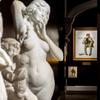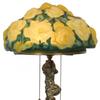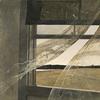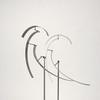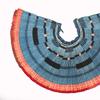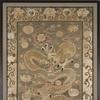Against the Grain: L'Éternel Printemps by Auguste Rodin
- May 17, 2019 16:33
“Man's naked form belongs to no particular moment in history; it is eternal, and can be looked upon with joy by the people of all ages.”
― Auguste Rodin
For many, the legendary Auguste Rodin is the father of modern sculpture. Though he never intended to contradict what then-contemporary critics considered the artistic ideal, his gift for rendering every nuance of the human form was undeniable. In Rodin’s able hands, clay became a masterpiece just waiting to take shape. It is this uncanny ability that allowed the artist to change the face of the art world forever.
Classically trained, Renoir struggled to attain any notice for his painting or sculpted works. Rejected by the École des Beaux-Arts and the more lenient Grande École, in combination with the personal tragedy of his sister’s death, he eventually decided to give up art and join a Catholic order in 1862. Luckily, the head of the congregation recognized his talent and encouraged him to leave the order and pursue his dream.
His passion was reignited by his studies with renowned sculptor Antoine-Louis Barye, whose meticulous attention to musculature and motion awed Rodin. But it wasn’t until 1875 and his fateful visit to Italy that changed his life, and his art.
“It is Michelangelo who has freed me from academic sculpture.”
― Auguste Rodin
This tremendous shift in perspective led to the career success he had always sought, culminating in the massive sculptural project to which he dedicated much of the next 40 years of his life – The Gates of Hell.
This emotive and breathtaking work, entitled L'Éternel Printemps, was originally intended for his pièce de résistance based upon Dante’s Inferno. A stunning sculpture of passion and love representing the adulterous passion of Dante's Francesca da Rimini and Paolo Malatesta. However, the work was deemed too “joyful” to be included, and in turn, Rodin executed it as a stand-alone sculpture. In 1897, he exhibited L'Éternel Printemps at the Salon to critical acclaim.
After the showing, Rodin awarded the casting of his work in bronze to the famed Barbedienne foundry the following year. Rodin’s original concept included the male model’s arm and leg extending from the scene, which proved problematic for Barbedienne to execute in the first state of casting.
Thus, Rodin created the second state, adding rocks to the composition in order to increase its stability. The present work is the second state, second reduction, meaning it is the second largest of four bronzes from the second state. Other versions of the bronzes can be found in museums worldwide, including the Musée Rodin (Paris), Metropolitan Museum of Art (New York), Museum of Fine Arts (Boston), Philadelphia Museum of Art, and others.
Rodin stands at the forefront of art history, as he single-handedly brought sculpture back into the limelight, where it so rightly deserves to be.
This important work is accompanied by a letter from the Comité Auguste Rodin confirming it will be included in the forthcoming Catalogue Critique de l’Oeuvre Sculpté d’Auguste Rodin by Jérôme Le Blay.

